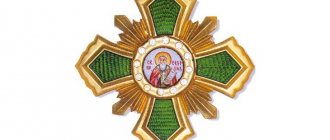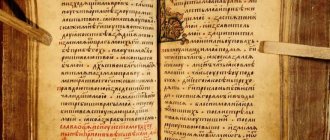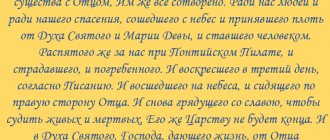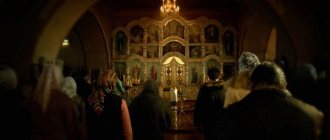Ave Maria - an eternal source of inspiration
When I already counted three “Ave Marias” in my repertoire (by Schubert, Caccini and Bach-Gounod), I wanted to write an article about this wonderful work, which at all times has inspired the most famous composers to create melodies of the most amazing beauty.
Among them are Caccini, Liszt, Saint-Saëns, Verdi, Dvorak, Palestrina, Gounod (based on a prelude by Bach), Mascagni. What exactly is “Ave Maria”? "Ave Maria" is one of the most popular Catholic prayers to St. Virgin Mary.
I absolutely love Caccini’s “Ave Maria” - one of the most famous works in the world. Only the first two words of the prayer are sung in it. On our website there are sheet music of “Ave Maria” by Caccini, as well as the backing track of “Ave Maria” by Caccini. When I started writing the article, I was surprised to discover that the authorship of this “Ave Maria” is disputed (below you can read about the authorship of “Ave Maria” by Caccini).
It was also very interesting to learn that Schubert’s “Ave Maria” is not a prayer. Its text is a free translation from English into German of the third song of Ellen from Walter Scott's poem about the Celtic Lady of the Lake "The Maiden of the Lake". The text includes only the first two words of the prayer, and is sometimes sung in German and sometimes in English. After some time, they began to sing it to the words of the Catholic prayer.
Now about the prayer itself. A little history.
This prayer is named after the first two words. It is also called the “angelic salutation”, or “angelico salutatio”, since its first phrase is the greeting the Archangel Gabriel said to Mary in the episode of the Annunciation.
The prayer consists of two parts. The first part is taken from the Gospel of Luke. Here the text of the greeting of the Archangel Gabriel at the moment of the Annunciation (from Luke, 1, 28), and the text of the greeting of Elizabeth in the episode of Elizabeth’s visit to Mary (from Luke, 1, 42) are combined.
Around the 13th century, after the words “fructus ventris tui” (“fruit of your womb”), the name of Jesus was inserted into the prayer.
The second part (“Sancta Maria...”) is a request addressed to the Blessed Virgin Mary to “pray for us.” It appeared around the 14th century, and it had two endings: the first “Sancta Maria, Mater Dei, ora pro nobis peccatoribus” (“Holy Mary, Mother of God, pray for us sinners”), the second “Sancta Maria, Mater Dei” , ora pro nobis nunc et in hora mortis nostrae" (“Holy Mary, Mother of God, pray for us, now and at the hour of our death”).
The modern version of the prayer appeared around the 16th century and was included in a collection of prayers published by Pope St. Pius V in 1568.
"Ave Maria" lyrics
Ave Maria, gratia plena, Dominus tecum, benedicta tu in mulieribus, et benedictus fructus ventris tui, Jesus.
Sancta Maria, Mater Dei, ora pro nobis peccatoribus, nunc et hora mortis nostrae. Amen.
Translation of "Ave Maria"
Hail Mary, full of grace, the Lord is with you; Blessed are You among women, and blessed is the fruit of Your womb[,] Jesus.
Holy Mary, Mother of God, pray for us sinners, now and at the hour of our death. Amen.
In the Byzantine rite, the Ave Maria prayer corresponds to the Song of the Blessed Virgin Mary.
Standard Gregorian chant “Ave Maria” in the first tone:
Approximate decoding in modern notation:
Version of alternative authorship of “Ave Maria” by G. Caccini.
The work was created by the Soviet composer Vladimir Fedorovich Vavilov (1925 1973). Vavilov is known among professionals as an excellent hoaxer. For example, on one of the records he recorded the composition “Canzona and Dance” and attributed it to the composer Francesco di Milano. Thirty years later, researcher Ze'ev Geisel proved that this work has nothing to do with the Italian and belongs to Vladimir Vavilov. The poet Henri Volokhonsky wrote the text “Above the Blue Sky” to the music of “Canzone”. Subsequently, this song became a kind of calling card for Boris Grebenshchikov in the version “Under the Blue Sky”.
Approximately the same story happened with “Ave Maria,” which on the record was labeled “Unknown author of the 16th century.” After some time, this work began to appear in the world under the authorship of Giulio Caccini. Either Vavilov himself, or Irina Arkhipova (one of the first performers of this composition), or someone else substituted the name of the Italian for the brilliantly stylized antique composition. One way or another, the work acquired false authorship. After some time, researchers and performers began to have doubts. Some performers at concerts began to announce dual authorship: Caccini-Vavilov. Nowadays, professionals clearly attribute this composition to Vladimir Vavilov, although from the stage one still sometimes hears: “And now the composition of the sixteenth century author Giulio Caccini “Ave Maria” will be performed.
According to Vavilov’s daughter, he hoaxed it because he was afraid that the works of an unknown Soviet composer would simply not be published.
A very peculiar stroke of fate. Even during Vavilov’s lifetime, Vavilov’s works gained strength and became popular, but he remained in the shadows, practically unknown. And of course, it is extremely interesting how he felt when he learned about the next victory of “Ave Maria” by Giulio Caccini?
Sources: Vladimir Yanke. Book "Breath of Music". "Ave Maria" was written in the USSR?
LiveInternetLiveInternet
Author: Galya Konstantinova There are not many perfect melodies in this world. So beautiful that they are familiar to almost everyone. It’s absolutely incredible when similar melodies are written by different people, and even with different lyrics. The general thing is only the name, theme, image. This in itself is a mystery. So, Hail Mary! Initially - the greeting of the Archangel Gabriel to Mary at the moment of the Annunciation. In the Catholic tradition - Ave Maria, in the Orthodox - “Song of the Most Holy Theotokos” (“Virgin Mother of God, Rejoice!”). This prayer is one of the most famous; since the 11th century, only individual words have been added to it. Áve, Maria, grátia pléna; Dóminus técum: benedícta tu in muliéribus, et benedíctus frúctus véntris túi, Iésus - that’s how it sounds in Latin. Θεοτόκε Παρθένε, χαῖρε, κεχαριτωμένη Μαρία, - that’s how it sounds in Greek. This prayer has been translated into most languages, and is heard in the Anglican, Lutheran, and Greek Catholic churches. In Orthodox churches we hear the following words: Virgin Mary, O blessed Mary, the Lord is with you: blessed are you among women, and blessed is the fruit of your womb, for you have given birth to the Savior of our souls. Several dozen works have been written on the text of this prayer. But none of the songs that will be discussed and which can be heard in the videos below are prayers. This is simply brilliant music, some of which is associated with famous words, and some of which are not, and the authorship of the latter melody has been questioned. And the conclusions were brought to the USSR. Madonna and Child. Taddeo di Bartolo (Avignon, 1400)
The most stunning examples of Ave Maria melodies are associated with unusual stories. Everyone knows the most famous “Ave Maria” by Bach-Gounod, Schubert and Caccini (but the author is not Caccini!).
"Ave Maria" by Bach-Gounod
One of the most famous and fundamental works of I.S. Bach's two-volume Well-Tempered Clavier. Musicians have been playing preludes and fugues from it since childhood and throughout their lives. The very first prelude, which opens the entire cycle, at first glance is just a seemingly surprisingly simple C major tune. At the second and subsequent glances it doesn’t seem so anymore – the foreplay is mesmerizing.
A century and a half later, the French composer Charles Gounod (known to us from the opera “Faust” with his “People are dying for metal!”) wrote a melody for the prelude. I simply put my own melody on Bach’s musical fabric. The music has taken on a life of its own and is one of the most frequently recorded and performed in the world. But now, if it is sung, and not performed in one of the many instrumental versions, then the Latin text is heard again.
"Ave Maria" by Schubert
This is no less brilliant and no less famous song. But it has nothing to do with prayer at all! And it was originally called “Ellen’s Third Song.” True, the first two words, that is, the address, were preserved (“Ave Maria! Maiden mild! Listen to a maiden’s prayer!”). The text in Walter Scott's poem was in English and referred to the Celtic Lady of the Lake.
W. Scott’s work “The Virgin of the Lake” was translated into German by Adam Storck, and this text was already used by Franz Schubert (“Ave Maria! Jungfrau mild”). More precisely, Schubert wanted his song to sound in both English and German - so that it would be sung both at home and in England. It is a completely understandable wish of a German composer, aware of his genius, but living in terrible poverty. And we often hear the song in Russian, this is A. Pleshcheev’s translation: Ave Maria! Night has come. We are exhausted by heavy grief, And the rock serves as our bed Above this eternal stormy sea...
Full text in German, English and Russian and the history of creation here: https://www.maykapar.ru/articles/avemaria.shtml And now this romantic song by Schubert is heard everywhere. In all variants, and with Latin too, which the composer himself did not intend at all...
The most mysterious story is about another famous work. “Ave Maria” - this beautiful music appeared in 1970 and instantly spread throughout the world. The authorship was subsequently indicated - the little-known Italian composer Giulio Caccini (1551–1618), one of the founders of the opera genre.
It took several decades of research by enthusiasts and examinations by professionals in lute music to come to an interesting conclusion: the author of this famous “Ave Maria” is ... the Soviet guitarist and lutenist V.F. Vavilov (May 5, 1925 – March 11, 1973, Leningrad). A St. Petersburg guy from a working-class family, who fought in the Great Patriotic War and devoted his life to music.
Vladimir Fedorovich Vavilov https://www.abc-guitar.narod.ru/pages/v_vavilov.htm
The disc published (“Lute Music of the 16th–17th Centuries”) contains several world-famous melodies (“Golden City”, “Richercar” by Nigrino and others). They were accompanied by the Italian names of the authors of the music or it was indicated that the author was unknown, but nevertheless, he was a representative of the ancient Italian lute school. The record sold out instantly. And then people who were not entirely far from music began to become curious. But there was no one to ask. V. Vavilov had already died by this time. He did not live long (he did not live to be 48 years old), and was not rich at all. He performed in a guitar duet and recorded two records. At the moment, it is considered proven that he is not only a performer, but also the author of most of the melodies that have become international hits.
Now Vladimir Fedorovich Vavilov is called a brilliant hoaxer. But it seems that we once again did not notice the brilliant composer...
Source: https://s30668851382.mirtesen.ru/blog/43310176799
Story about V. Vavilov:
Series of messages “Music”:
Part 1 - The most beautiful organs in the world to the music of Albinoni Part 2 - In memory of Vladimir Ivanovich Povetkin Part 3 - Ave Maria: from musical history Part 4 - About your favorite concert Part 5 - Pelageya “Bird” ... Part 17 - Songs performed by Varya Strizhak Part 18 - A musical walk around St. Petersburg with the artist Vladimir Kolbasov Part 19 - The song “Where the path across the river is powdered...” from the film “Barak”
Series of messages “History”:
Part 1 - The native places of my childhood... Part 2 - Ave Maria: from musical history Part 3 - About the history of Russia Part 4 - Stalin about the plans of the Trotskyists and our future... Part 33 - HYPERBOREA - THE FOREMOTHER OF WORLD CULTURE Part 34 — About the pathological false chronology of Academician A.T. Fomenko Part 35 - 1918: the terrible anniversary of the intervention
F. Schubert "Ave Maria"
The miniature masterpiece of the Austrian composer Franz Schubert has been loved by audiences and performers all over the world for almost 2 centuries. An unusually touching melody resonates in the soul of both a professional musician and an amateur who does not know sheet music.
the history of the creation of the miniature “Ave Maria” by Schubert and the contents of the work on our page.
History of creation
In the summer of 1825, Schubert went with Johann Vogl, a retired opera singer, as an accompanist for concerts around upper Austria. The musicians were driven by the desire to earn money in an accessible way - by performing. The province greeted them warmly, but their financial expectations were not met; their earnings were barely enough to continue their journey, and sometimes they had to play music “for board and lodging.”
By that time, Schubert had passed 28 years out of the 31 that were allotted to him. Most recently, he was denied the position of court vice-kapellmeister. The music he composed was published occasionally, brought in almost no income, and publishers paid extremely little. It was performed even less frequently. Franz walked that path among composers who during their lifetime almost never saw their audience.
And so in June they arrived in the small mountain town of Gmunden on the shores of Lake Traun. Here they stayed for almost a month and a half in the hospitable house of the merchant Ferdinand Traveger. The picturesque surroundings of northern nature, the rocky shore of the lake, and the surrounding mountain range inspired many poets, composers and other creators who come here specifically. All this made a huge impression on Schubert.
Here he wanted to write music based on the poems of the incredibly popular Walter Scott at that time. Without hiding his intentions, Schubert openly stated that he hoped to gain fame through these poems far beyond the borders of Austria. Therefore, initially the text for the vocal cycle of 7 songs was supposed to be taken from the original in English and translated into German by Adam Storck.
Walter Scott's poem "The Virgin of the Lake" was first published in 1810, and literally immediately gained enormous popularity. It consisted of 13 songs, Schubert set only 7 of them to music. “Ellen's Third Song” began with an appeal to the Virgin Mary: “Ave Maria,” but further content does not reflect a biblical story. This is a romantic song of a young maiden, a plea for help, a request for shelter from difficult adversities, the “harsh sea of life,” full of allegories and allegories. The music is the same - romantic, subtle, beautiful. The poetic translation of this ballad into Russian by Alexei Pleshcheev is widely known.
Thus, the author's version of the song implied Storck's German text. The original in English had a slightly different metric and suited the music worse. And the canonical Latin text used in Catholic services, which recalls the event of the appearance of the Archangel Gabriel to the Virgin Mary with the good news (in Orthodoxy this is the prayer “Rejoice to the Virgin Mary”), did not fit here at all.
However, the success of "Ave Maria" was overwhelming among the public from the very beginning. Many fans of the melody were imbued with a surprisingly pious mood from listening. Everyone noted the extraordinary sublimity and prayerfulness of the music. While Schubert had nothing of the kind in mind - his childhood spent within the walls of the convict, a closed church boarding school for singers, disappointed him for a long time in the foundations of the church.
The vocal cycle was published already in 1826, and Schubert received a record fee of 200 guilders almost immediately. True, the hope of becoming famous in England never came true. But very soon the opportunity presented itself to perform in Vienna at a big concert - in honor of the anniversary of Beethoven’s (he died in 1827), Schubert wrote several works. In fact, this was the first public performance of his music to such a wide audience.
The audience greeted the small (his height was only 157 cm), inexpressive Schubert with restraint at first, but gradually came to rejoicing; by the end of the concert there were shouts of “A new Beethoven is born!”, “Long live Schubert!” This also brought in serious money, with which Franz bought a piano. He was so happy about this emerging popularity, he was accepted, loved, he imagined further fame and success.
But by a bitter coincidence, just a few months after the memorable concert, Franz Schubert fell seriously ill with typhus and died. The piano, purchased with a generous reward, was sold. And the proceeds went to the funeral and arrangement of a separate grave. An honor that not every composer of that period received...
Contents Ave Maria
The ballad or song genre was Schubert's favorite. He was a true master of expressing depth, lyricism, and expression of feelings in a short form using musical expressive means. Often, when analyzing his musical works, it is mentioned that even a novice performer can master them. They are comfortable tessitura and allow the performer to accompany himself. This is probably explained by one peculiarity - Schubert was a teacher’s assistant, during his lifetime he performed little, and wrote music exclusively for a narrow circle of friends. They gathered at the so-called “Schubertiades”, and the only desire united them - to perform and listen to music. It was for such evenings that Franz composed his small but beautiful plays.
The music of “Ave Maria” is chamber, lyrical, sublime. The opening chords, reminiscent of the rhythmic rocking of a boat, set the mood for a calm, peaceful mood. And the melody takes you to otherworldly places, to dreams of something other than earthly.
The verse form repeats the musical material, giving the entire song completeness and conciseness. And at the same time, each verse is performed with different strength of feeling and sounds new each time.
Ave Maria today
Interest in this music has not waned at all since then. It has been reissued many times, and a huge number of arrangements have been written for instruments and voices. The melody performed by brass (trumpet or horn) takes on a hymn sound. The string solo gives it more delicate shades. There is also an arrangement for piano written by Georges Bizet for the collection The Pianist-Singer.
In vocal practice, the children's treble performance by Robertino Loretti, the deep tenor mature performance by Luciano Pavarotti and other famous opera and chamber singers are considered classic. There are also modern arrangements of this music in recordings of electronic instruments.
It can be heard in movies, advertising, even computer games. Here is just a partial list:
- “A Short Breath of Love” (Russia, 1992), which features an arrangement of the melody for electric guitar performed by Viktor Zinchuk;
- "The Godfather Part III" (USA, 1990);
- “Come and See” (USSR, 1985);
- “1+1” (Spain, 2014);
- "Odnoklassniki" (USA 2014);
- Russian television series “Kitchen” (STS);
- m/f " Fantasia" by Walt Disney (USA, 1940);
- a 1972 Soviet cartoon dedicated to the victims of the Vietnam War;
- animated film "Rango" (USA 2011);
- "Runaway Bride" (USA 1999).
This music allows the performer to show not only technique, but also his lively emotional perception of the work; despite some simplicity, it requires a good sense of proportion and musical taste. But listeners are always happy if the poster indicates that there will be an opportunity to listen to “ Ave Maria ” by Franz Schubert .
Did you like the page? Share with your friends:
F. Schubert "Ave Maria"










